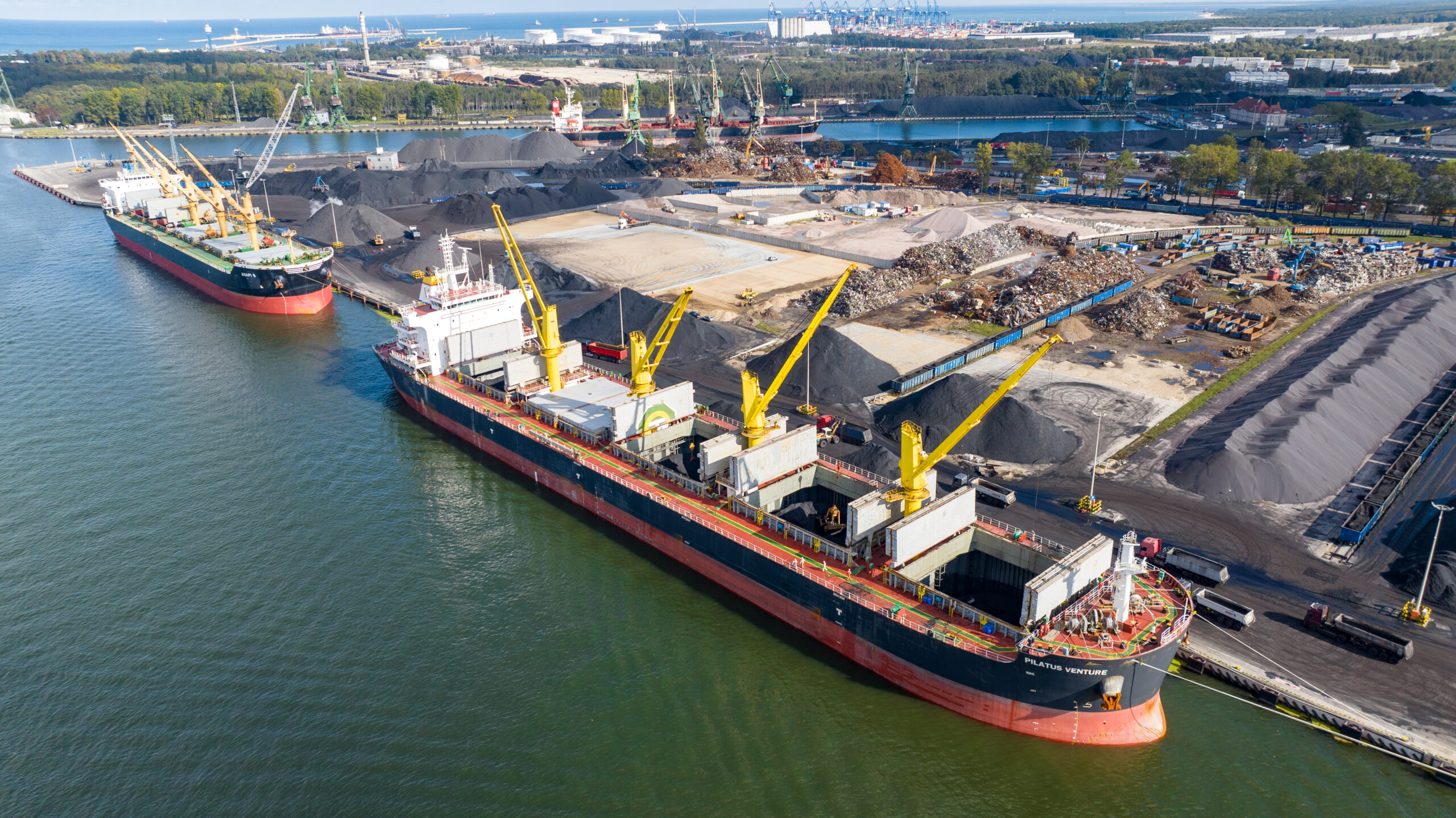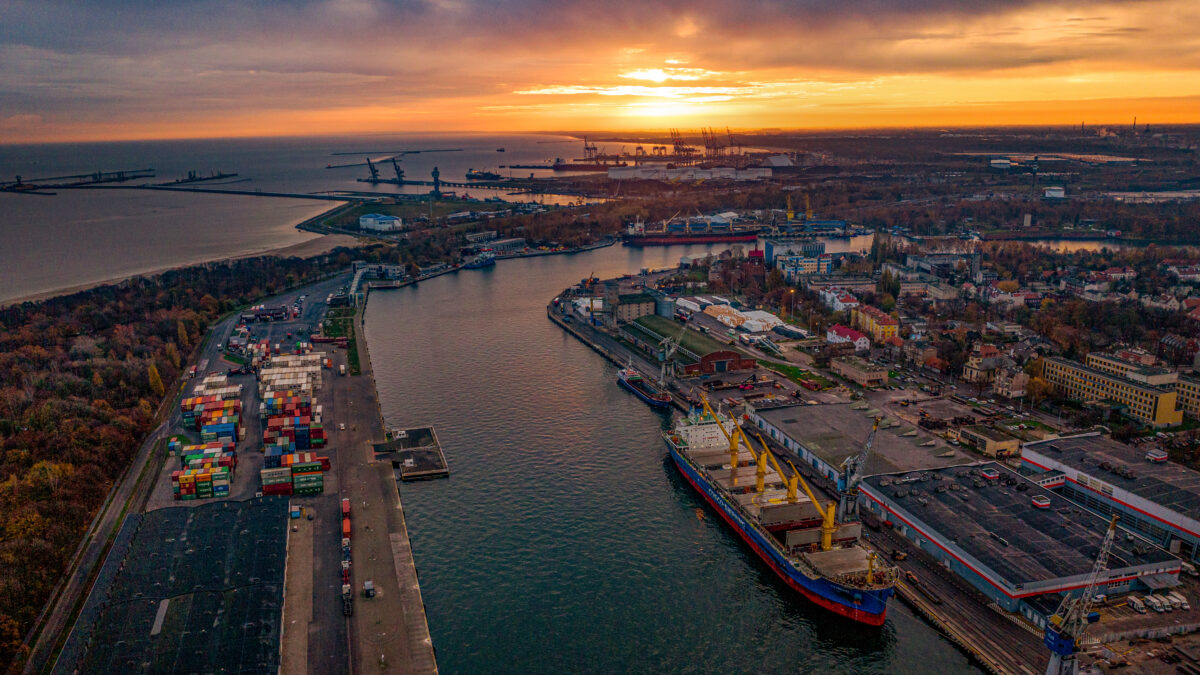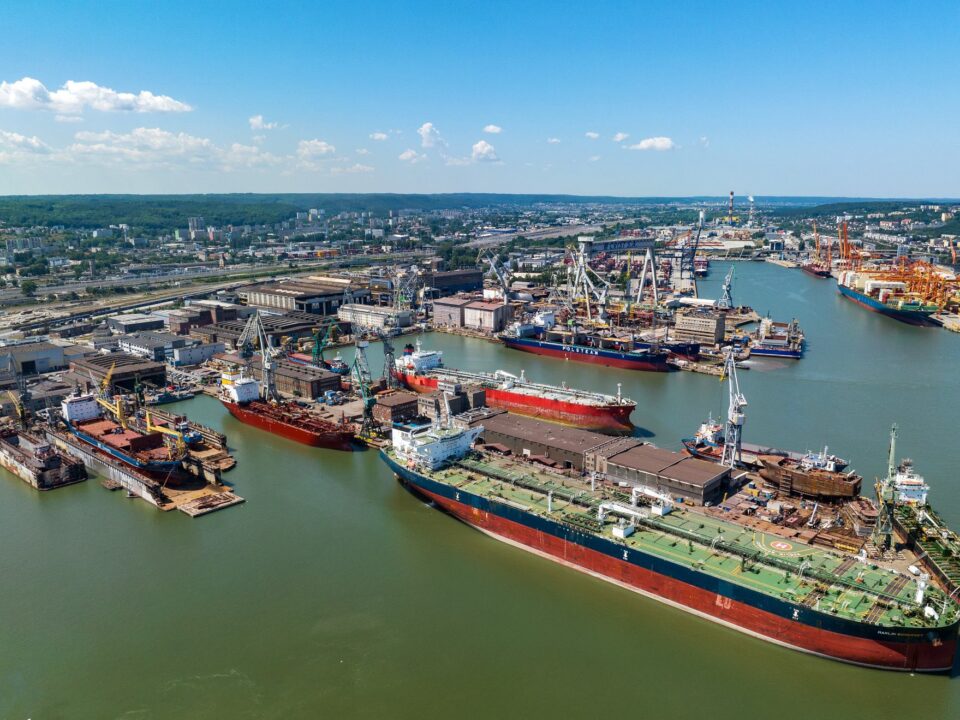
Polish Ports Record
6 February 2024
Real safety in a virtual world
5 April 2024After a year of declines, described by some experts as a normalization after a record-breaking 2021, container terminals at Polish ports once again recorded a decline in turnover in 2023. The largest affected OT Port Gdynia – 22% and Hutchinson Ports Gdynia (Gdynia Container Terminal) – 9%. In contrast, the global slowdown was least felt by Gdansk’s Baltic Hub Container Terminal, where the decline was less than 1%, and the Baltic Container Terminal in Gdynia (BCT) with a drop of about 2% y/y. In total, the terminals handled 2.98 million TEUs, about 80,500 TEUs less than last year.
The TSL industry is said to be a barometer of the entire economy, which last year’s volume statistics seem to reflect perfectly. In fact, for most of the third quarter of the year, monthly transshipments settled at levels similar to 2022, i.e. 230-260 thousand TEUs per month. Interestingly, this year March, which is usually one of the record months due to increased shipments ahead of the Chinese New Year celebrations, brought transshipments to the lowest since pandemic 2020. February was also marked by unusually large declines. Transshipments then did not exceed 215,000 TEUs, reaching the lowest value since 2017. On the other hand, the fourth quarter of the year allowed a rather optimistic view of the future, as transshipments in October and November exceeded the 2021 record (above 280,000 TEUs/month), but only to collapse to 227,000 TEUs in December. However, such a drastic decline should be attributed primarily to the growing crisis in the Red Sea and the decision by most shipowners to bypass Africa for ships employed on Asia-Europe services.
In terms of volume, GCT accounted for the largest share of the decline, with nearly 35,000 TEUs, most likely due to the shift of CMA CGM operations from Gdynia, to the Baltic Hub terminal in May 2023. Still, Poland’s largest terminal was not immune from declines either, ending the year with a loss of 28,600 TEUs, which, however, accounted for only one percent of total Gdansk volume. DB Port Szczecin also recorded a significant drop in transshipments last year in terms of volume, losing 7% year-on-year, representing a volume of about 5,500 TEUs.
The aforementioned shifts in shipowner services have apparently not been unaffected by the ports’ final share of container throughput. The year 2023 ended with a modest 1% decline in GCT’s share of transshipments to the Baltic Hub. The remaining terminals maintained their last year’s market shares. This means that the Gdansk terminal has a 69% share of container traffic in Polish ports, while BCT has 18%, GCT 11% and DB Port Szczecin 2%. Thus, a 1% increase in the share of container handling was recorded by the port of Gdansk, with a corresponding decrease in the share of the port of Gdynia (Gdansk 69%, Gdynia 29%). The Port of Szczecin-Świnoujście maintained last year’s 2% share of transshipments. In nominal terms, on the other hand, declines are noticeable at all ports. The largest decline was recorded by Gdynia, where relative to 2022 a total of more than 45,000 TEUs were lost; in Gdańsk, the declines exceeded 28,000 TEUs, the Port of Szczecin-Świnoujście recorded a 5,500 TEU adjustment in transshipments.
The decline in container transshipments is a reflection of the global economic slowdown. Freight indexes on all major trade routes showed downward trends for most of 2023. The Xenet Index reached a record low in November. On the Europe-Asia route, it reached a record low of around $300, while on the import direction the index then fell below $1,000. The unstable situation in the Red Sea reversed the unfavorable trend for shipowners, raising the indexes to the current level of $1,000 on the export direction, and over $4,500 on the import direction. However, it seems clear that the changes in the indices are due to increases in shipowners’ operating costs or their policies, rather than to increased demand for sea container transport.
Based on the results of Polish terminals, it can be concluded that the decline in transshipments has primarily affected Polish exports. The decline in the volume of export containers was about 3% year-on-year, while the decline in imports did not exceed 1.5%. What’s more, the past year saw a significant increase in the number of empty export container pieces, which increased by as much as 1/5. This is all the more significant because the export declines occurred during the period of the aforementioned record low freight rates, a potential driver of volume growth on this route.
A new year means a new hand and the need to look to the future. The future, according to UNCTAD, appears to be moderately bright. The first forecasts point to 3-4% volume growth in container shipping which, perhaps, will help stem the negative trend at Polish terminals. It seems, however, that the bigger challenge for terminals and the industry as a whole is not long-term results and forecasts, but short-term, even local disruptions in the functioning of transport chains affecting the final results at ports.
Article developed with Namiary na Morze i Handel magazine
phot. Namiary na Morze i Handel magazine






